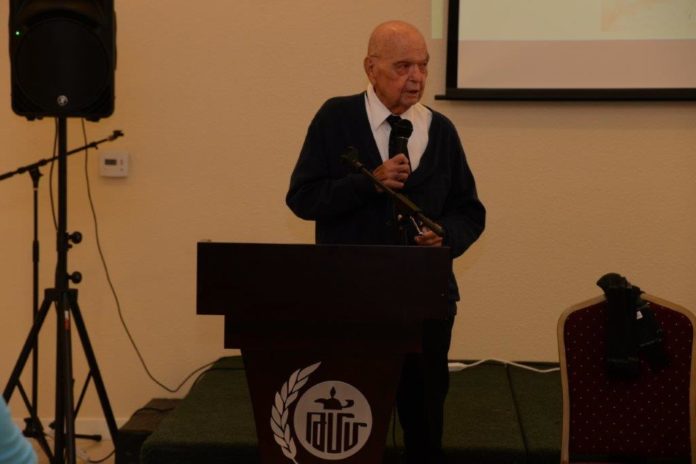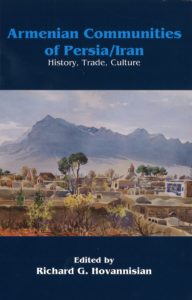BELMONT, Mass. — Prof. Richard Hovannisian on May 6 was the speaker at the first in-person evening lecture event since the beginning of the pandemic, at the National Association for Armenian Studies and Research (NAASR), for a program co-sponsored by the Armenian Mirror-Spectator. The program was also available online.
Hovannisian was there to speak about the book Armenian Communities of Persia/Iran: History, Trade, Culture, of which he is the editor. The book is a result of the proceeds from the last in the UCLA conference series, titled “Historic Armenian Cities and Provinces.”
Hovannisian, 89, made few concessions to age; the only difference from previous years was that he was sitting. He still speaks without notes, deliberately and calmly.
“I feel very fortunate I have been able to come back to the greater Boston area for the first time in several years since we all became home bound and worry bound,” he said, praising the “renewed and expanded facility” of NAASR, whose headquarters had undergone an extensive renovation which had been unveiled in the months before the pandemic.
“I didn’t think I would ever do this volume. All my other volumes in this series dealt with Armenian communities of the Ottoman Empire that are now in Turkey,” he said, adding that he had organized two conference on Iran and one on Jerusalem. “When I was urged to do so by the publisher, I said there are many others far more capable than I, but there were no takers,” he joked.
He has dedicated the book to his late wife, Dr. Vartiter Kotcholosian Hovannisian, “who for over 60 years was a beloved physician but also my academic partner as we traveled the together, into archives around the world, and her fluency in German, Russian and Armenian made it so much easier for me to be able to work and put together the volumes that we have over the years,” he said. She had passed away in November 2021.









